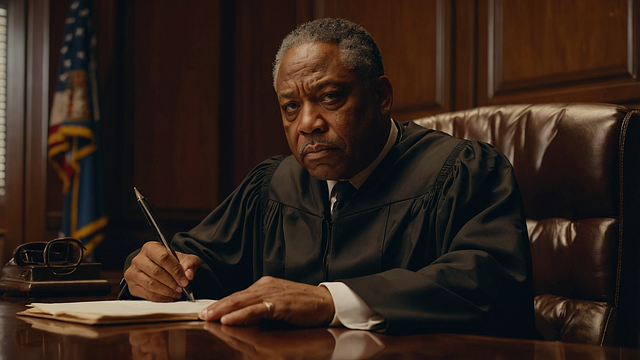The Steps in Criminal Procedure Litigation is a structured framework governing criminal cases, involving an investigation, filing of charges, pretrial phase, and trial. It distinguishes between misdemeanors and felonies, with varying penalties and legal strategies. Defense attorneys play a critical role in guiding clients through these steps, ensuring their rights are protected while navigating the complexities of the court system. This process ultimately leads to a verdict and sentencing, crucial for justice and dispute resolution in criminal matters.
Unraveling the intricacies of litigation is essential for anyone navigating the legal system. This comprehensive guide delves into the core components of criminal procedure, focusing on key steps in criminal litigation. From understanding the foundational differences between civil and criminal cases to exploring the trial process, we demystify each phase. Learn about the distinct characteristics of misdemeanors versus felonies and gain valuable insights into initiating legal action. Discover the essential elements that define successful navigation through the complex landscape of steps in criminal procedure litigation.
- Understanding Criminal Procedure Litigation: An Overview
- Steps Involved in Filing and Initiating a Case
- Key Differences Between Civil and Criminal Litigation
- Common Types of Criminal Cases: Misdemeanors vs. Felonies
- The Trial Process: From Pre-Trial to Sentencing
Understanding Criminal Procedure Litigation: An Overview

Criminal Procedure Litigation is a complex process that involves a series of steps designed to ensure fairness and justice in criminal cases. It’s an intricate dance between prosecutors, defense attorneys, and the court system, with each step meticulously navigating the rights of the accused, the interests of society, and the pursuit of truth. Understanding this procedure is crucial for both legal professionals and individuals across the country who may find themselves involved in high-stakes cases.
The process begins with an investigation, where law enforcement gathers evidence to support or refute allegations against an individual. This is followed by the filing of charges, which officially initiates criminal prosecution. The defendant then faces a series of pretrial hearings, where motions and challenges are heard, crucial decisions on admissibility of evidence are made, and the case takes shape. This phase is critical for shaping the strategy for both sides, as they prepare for the ultimate confrontation in court. Across the country, experienced defense attorneys play a pivotal role in guiding their clients through these steps, ensuring their rights are protected throughout the criminal procedure litigation process.
Steps Involved in Filing and Initiating a Case

Initiating a legal case involves a structured process known as the steps in criminal procedure litigation. The journey begins when an individual or entity decides to file a lawsuit, spurred by perceived injustices or violations of their rights. This decision is often driven by factors ranging from personal experiences to broader societal concerns, reflecting the intricate interplay between individual grievances and collective action within the philanthropic and political communities.
The filing process itself varies significantly across different legal systems but generally involves submitting a detailed complaint to the appropriate court. This document outlines the plaintiff’s claims, grounds for jurisdiction, and requested relief. Once filed, the case is assigned a unique docket number, marking its official entry into the judicial system. From this point onwards, a series of procedural steps unfold, including service of process, where legal notices are delivered to the defendant(s), setting in motion a chain of events that can ultimately lead to a trial or alternative dispute resolution methods, all aimed at avoiding indictment and ensuring justice is served across the country.
Key Differences Between Civil and Criminal Litigation

Civil litigation and criminal litigation are two distinct legal processes with fundamental differences in purpose, procedures, and potential outcomes. At their core, civil litigation involves disputes between individuals or entities seeking monetary compensation or specific performance to resolve a private matter. This often includes contracts, torts, property disputes, and family law cases. In contrast, criminal litigation focuses on the state’s prosecution of individuals accused of committing a crime, with the primary goal of punishment and deterrence rather than restitution.
The steps in criminal procedure litigation differ significantly from civil cases. In a general criminal defense scenario, the process begins with an investigation, often triggered by law enforcement observing potential criminal activity. This leads to an arrest or grand jury indictment, followed by a series of hearings where both sides present evidence and arguments. The defendant’s rights are protected throughout, ensuring a fair trial. Unlike civil litigation, which may involve complex discovery processes, criminal cases typically focus on the prosecution’s presentation of evidence to prove beyond a reasonable doubt that the accused committed the crime. This distinction is crucial when considering the impact on corporate and individual clients, as well as the potential implications for philanthropic and political communities involved in legal disputes.
Common Types of Criminal Cases: Misdemeanors vs. Felonies

In criminal law, understanding the distinction between misdemeanors and felonies is a crucial step in navigating Steps in Criminal Procedure Litigation. Misdemeanors are considered less serious offenses, typically punishable by fines, community service, or short periods of imprisonment, often up to one year. These cases usually involve violations of lesser significance, such as traffic infractions, simple assault, or minor theft. On the other hand, felonies are grave crimes that carry severe penalties, including lengthy prison sentences and substantial fines. Examples include aggravated assault, armed robbery, and most types of fraud.
The corporate and individual clients involved in these cases face significantly different outcomes. For misdemeanors, the focus often lies on rehabilitation and swift resolution. In contrast, felonies demand a more extensive investigation and often lead to prolonged legal battles, especially in high-stakes cases. Throughout all stages of the investigative and enforcement process, accused individuals have the right to due process, representation by counsel, and fair trials.
The Trial Process: From Pre-Trial to Sentencing

The trial process is a pivotal phase in criminal procedure litigation, marking the culmination of legal arguments and evidence presentation. It involves several key steps that culminate in sentencing. Pre-trial proceedings set the stage by determining the admissibility of evidence, resolving motions, and often leading to plea bargains, thereby avoiding the need for a full trial. These stages are crucial in shaping the case’s trajectory and are integral parts of the steps in criminal procedure litigation.
During the actual trial, both prosecution and defense present their cases before a judge or jury. This involves witness testimonies, expert opinions, and the admission of physical evidence. The general criminal defense strategy often focuses on challenging the prosecution’s evidence, raising reasonable doubts, and presenting alternative explanations to avoid indictment. In the event of a jury trial, these proceedings are designed to ensure a fair and impartial decision-making process. Once both sides have presented their cases, the judge or jury retreats for deliberations before delivering a verdict, which then leads to the sentencing phase where the defendant’s fate is decided based on the crime committed.
Understanding the intricacies of criminal procedure litigation is vital for anyone navigating the legal system. By familiarizing themselves with the steps involved, from filing a case to sentencing, individuals can better comprehend their rights and prepare for potential outcomes. This article has provided an overview of the key aspects, including the distinctions between civil and criminal cases, different types of crimes, and the trial process. Remember that each case is unique, so consulting legal professionals is essential for accurate guidance through the complex steps in criminal procedure litigation.






